As the strength of safes increased to accommodate higher value contents, so did the criminals ingenuity, and this continues to be the great motivating force in safe design and engineering to the present day.
For instance, the term 'screwing' a safe derives from the clever application of force by drilling a hole at or near the leading edge corner of the door plate and tapping a thread through which a heavy machine bolt can be screwed engaging against the inner body plate, gradually winding the door out of its engagement, bursting the lockcase retaining bolts as is progresses. Finally when a sufficiently large gap is created, a heavy lever is applied to finish the job.
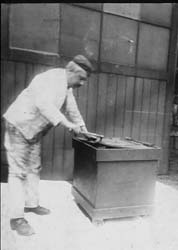
The safe illustrated is one of Milner's early improvements with heavy reinforcing bands around the body and enclosed 'knuckle' hinges, probably a List 3 Quadruple Patent Strong Holdfast. In this model the door could not be displaced laterally due to the heavy banding and also the dovetail anti-wedging blocks which were the idea of a Manchester Police Detective John Sutcliffe and which Milner decided to patent and incorporate in their heavier safes.
In order to prevent this type of attack, another famous maker, George Price of Wolverhampton, offered his better quality safes with fully case-hardened doors and bodies.(Patent No.236 Jan.31 1860). This could be considered one of the most significant improvements ever in safe engineering.
So by the middle of the 19th.Century the British safe industry comprised the following, in order of age. E.Tann & Sons, factory in Hackney, London, founded in 1795 making iron chests. Chubb Lock & Safe Co., factory also in London, founded in 1818, but only making locks until about 1836.
The records of Tann show that from 1828 they supplied 1,102 chests and doors to Chubb until their own manufactory started in 1836 at Cowcross Street, Smithfield, London.
 copy.jpg)
The illustration (left) depicts the safe which was exhibited at the Great Exhibition in 1851 which has an inner door containing additional fire-resisting compound. There is no bolt throwing handle, the mechanism being operated by the key. The actual safe is on display in the London Silver Vaults.
The three other leading makers, Samuel Chatwood, Hobbs Hart, and Ratner Safe Companies were founded in 1864, 1866, and 1890 respectively. In the second tier were George Price, Thos..Skidmore, Fred.Whitfield, Thos.Perry, Cyrus Price, and Samuel Withers, while in a third tier, there were another 40 or so small makers who were mostly centred around the Birmingham area with more unfamiliar names such as Brooks, Cartwright, Cotterill, Griffiths, and Hipkins.
With only one or two exceptions all the safes made by the third tier manufacturers were of fire-resisting quality only and would not resist any serious attack by the methods described earlier. In other words they do not meet the definition of the word "safe"
The following is a compilation of extracts from the London Trades Directories from 1842 to 1907, listing the leading safe makers and agents of the period who had taken premises in London.
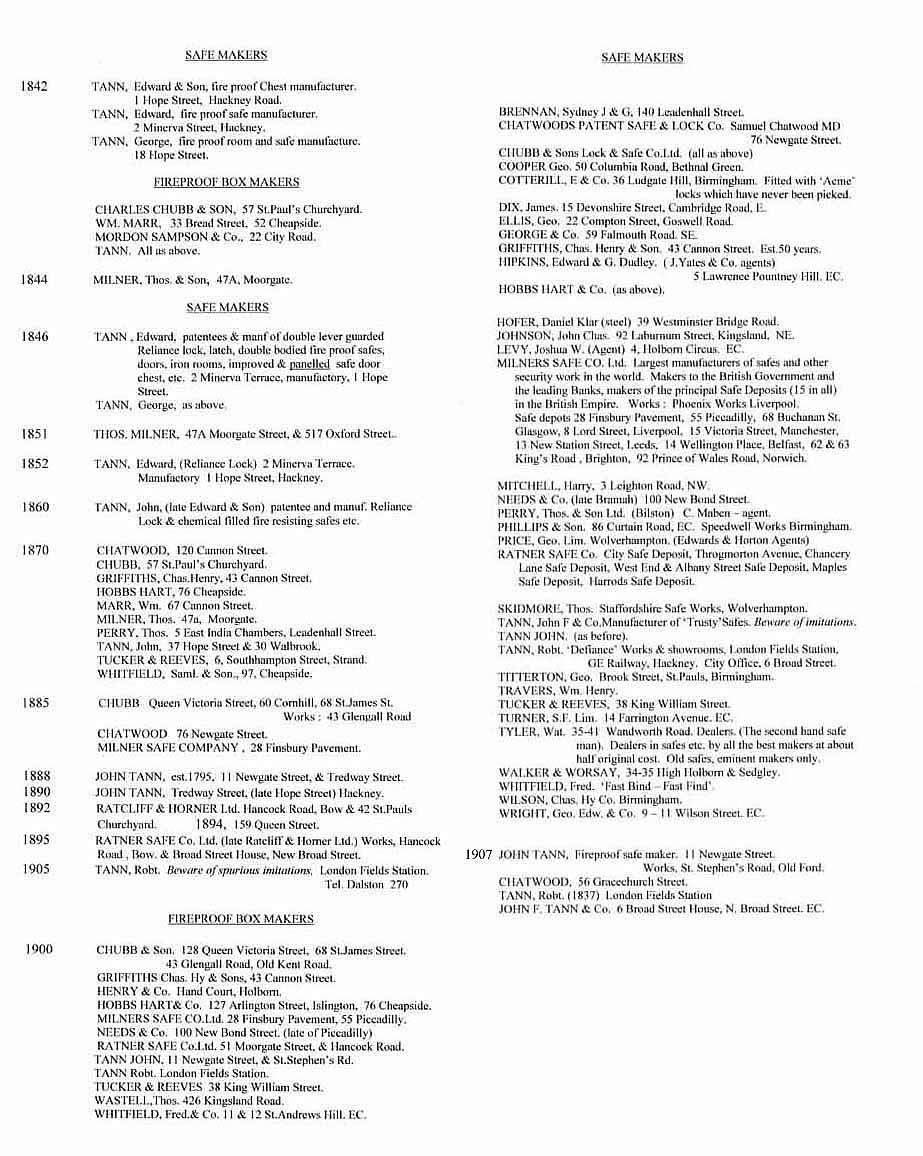
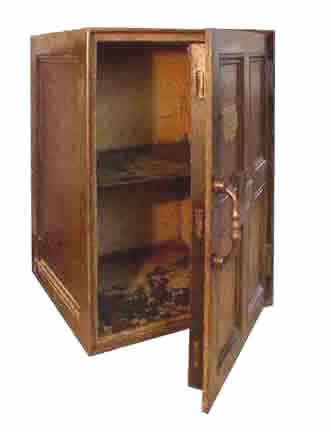

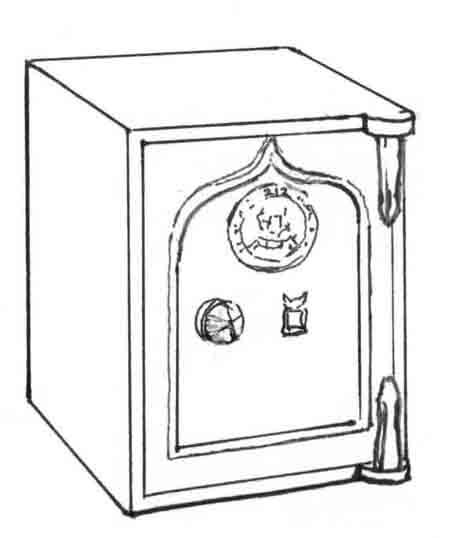 ate iron safes and chests. As with his contemporaries, his safes were constructed of sheet wrought iron of 1/8" to 3/16" thickness depending on the size of the safe. These plates were rivetted to an angle iron frame to form the outer body and a light sheet metal inner body attached inside to form the chamber to accommodate the fire-proofing material. The door plate which contained the locking mechanism and fire chamber was usually 3/8" to 1/2 " thick.
ate iron safes and chests. As with his contemporaries, his safes were constructed of sheet wrought iron of 1/8" to 3/16" thickness depending on the size of the safe. These plates were rivetted to an angle iron frame to form the outer body and a light sheet metal inner body attached inside to form the chamber to accommodate the fire-proofing material. The door plate which contained the locking mechanism and fire chamber was usually 3/8" to 1/2 " thick.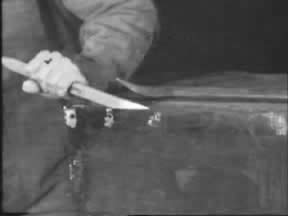 back or base plates were normally chosen as they gave easier access to any internal drawers.
back or base plates were normally chosen as they gave easier access to any internal drawers.
 copy.jpg)
